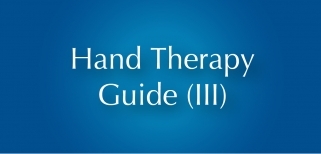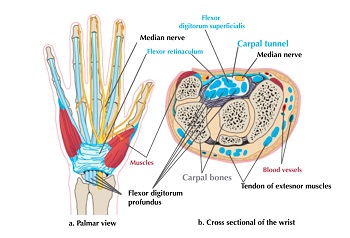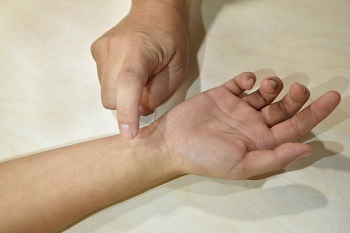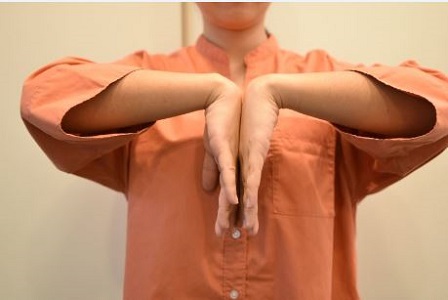




Health Information



Carpal Tunnel Syndrome
Carpal Tunnel Syndrome
About Carpal Tunnel Syndrome (CTS)
It is a condition due to compression of the median nerve as it travels through the wrist at the carpal tunnel. Inside the carpal tunnel are tendons that bend the fingers and thumb, and the median nerve. The median nerve supplies the sensation to the palm side of the thumb, index, middle and some of the ring finger. It innervates the thenar eminence muscles and two lateral lumbrical muscles.
|
|
Carpal Tunnel Syndrome Causes
Major risk factors for carpal tunnel syndrome are being female, middle aged and obese. Pressure on the median nerve can come from swelling or anything that makes the carpal tunnel narrower. For example – oedema from pregnancy, swollen tendons, fractures, repetitive wrist movement, rheumatoid and osteoarthritis, and diabetes.
Carpal Tunnel Syndrome Symptoms
The main symptoms are pain, numbness, and tingling, in the thumb, index finger, middle finger, and some of the ring finger. Symptoms are usually worse at night. Pain may extend up the arm. Weak grip and pinch strength may occur after a long period of time due to thenar muscle wasting. Patients may also report clumsiness.
Carpal Tunnel Syndrome Diagnosis
- Pins and needles, numbness and/or pain in medial nerve distribution of hand
- Decreased grip strength
- Phalen’s Test
- Tinel’s Test
- Nerve conduction studies
|
Tinel’s Test |
|
Phalen’s Test |
Referral
As soon as symptoms appear
Conservative Management
- Sensory evaluation
- Release pressure on median nerve through splinting for mild to moderate symptoms
- Activity modification education and postural advice
- Nerve gliding and tendon gliding exercises
Splinting
Night splinting with wrist in neutral
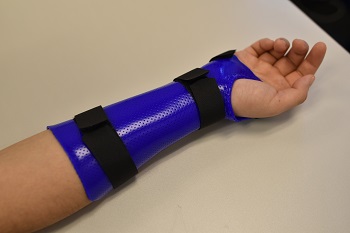 |
Post Operative Management
- Education to prevent re-aggravation
- Range of motion, tendon and nerve gliding exercises
- Scar and oedema management
- Pain management




